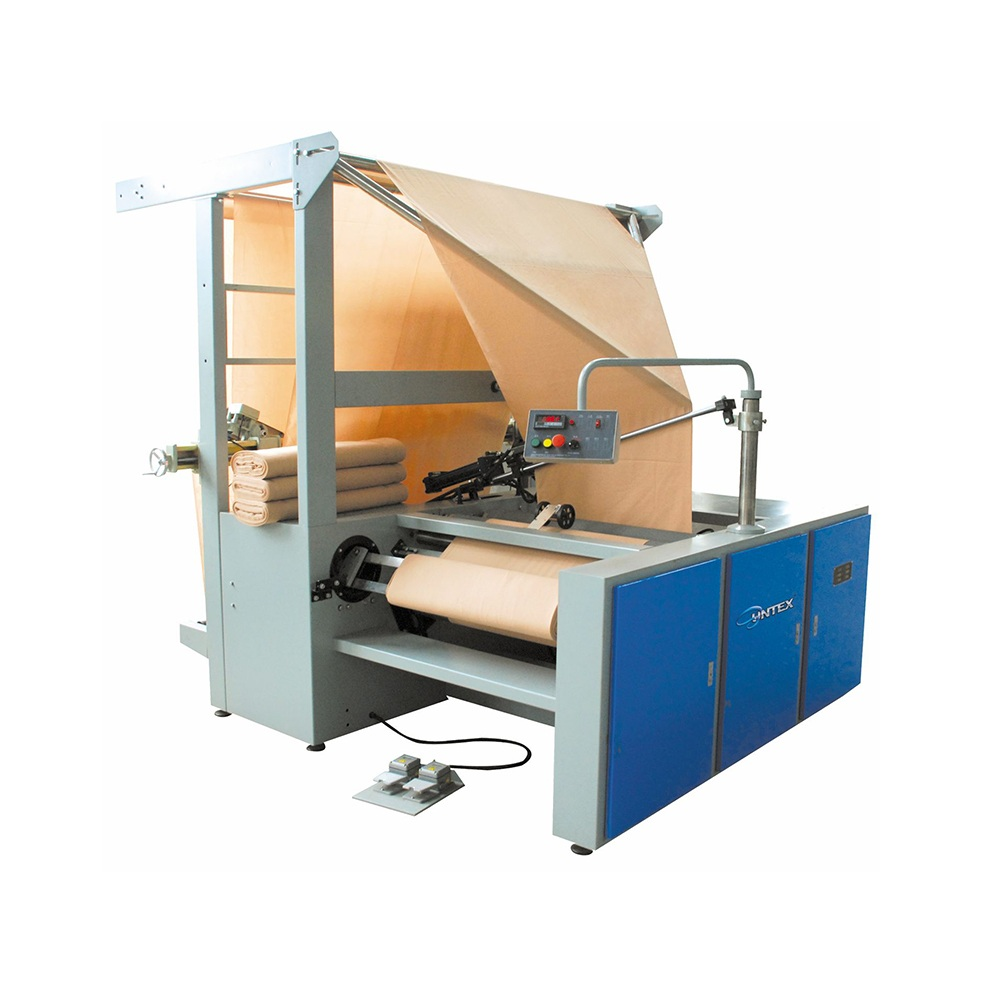Fabric folding machine is generally used to fold open textiles in half, and then harvest fabric boards or fabric rolls, which is handy for selling or storage. The major users of this equipment are fabric traders.
The machine is Suitable for woven, tulle, jacquard...fabrics. This machine may be provided to operate textiles from plait/loose form to fabrics on slab/card board, or with several alternative fabric input choices.
The primary procedure of the SUNTECH double folding machine are:
The fabric is unwound from inlet place/or its plaited fabric may feeding into the machine directly , and a set of cloth guider devices assist manage the centering of the fabric.
Then the fabric travels through the cloth roller, and then comes to the half-folding tripod to fold the fabric into half-width textiles. There are also edge alignment raster in the half-folding region to assist align the half-folded fabric edges, in order to enable better winding or closure.
The machine features has the digital counter meter equipment to facilitate measuring the cloth length.
Support counting in Meter(M) and Yard(YD) (YD).
Pre-set function.
e.g. pre-set 100m on the counter meter.
When arrives 100m, the machine will stop automatically.
After the winding is done, the buyer may immediately take the cloth roll for sale.
Basic Situation of Turkish Textile and Apparel Industry
We have numerous customers in turkey who have bought our double folding machine and provided positive comments on their experiences.
The textile and garment sector has a very significant place in the Turkish economy, and around 70 percent of the country's textile goods are exported to other countries. The textile and clothing industry is responsible for 17.5 percent of industrial output, 19 percent of manufacturing industry output, 21 percent of manufacturing employment, and 39 percent of the total export value of the country, according to the statistics. The textile and clothing industry accounts for 5.5 percent of the GDP.
The yearly production of local yarn goods includes around 265,000 tons of synthetic yarn, 126,000 tones of wool yarn products, and 819,000 tons of cotton yarn products. Among the local yarn products, synthetic yarn accounts for the greatest share. A total of about 4,580,000 tons of clothing and 2,210,000 tons of woven items are produced throughout the production of approximately 6,790,000 tons of woven and garment products. The yearly production of fabric goods is around 1,593,000 tons, with cotton textiles accounting for 1,503,000 tons, wool fabrics accounting for 72,000 tons, and synthetic fabrics accounting for 18,000 tons.
The textile industry in Turkey is now in the position of having the highest levels of both self-sufficiency and technological level in the world. Cotton, wool, and synthetic fiber production are all at or near the top of their respective global rankings. However, there are issues with the quality of the wool, which means that each year a significant quantity of high-quality wool fiber has to be imported from another country. Knitting, dying, printing, and embellishment are only some of the highly developed supporting businesses for Turkey's thriving textile and garment sectors.

With an annual export value of around $10 billion, textiles and clothing constitute the majority of Turkey's exports. Cotton, cotton thread, and cotton fabric had an export value of 777 million US dollars in 1999, and the United Kingdom, Italy, the United States, and Belgium were the primary customers for these products. The export value of man-made chemical fiber was 1.1 billion US dollars in 1999. The United States, Egypt, Italy, and the United Kingdom were the primary nations involved in the export trade. The value of textiles exported amounted to 859 million dollars in US dollars, with the majority of textiles leaving the country through European nations. The total value of garment exports was $6.2 billion, of which cotton garments accounted for 80% of the total. Germany, the United States, the United Kingdom, France, the Netherlands, and Russia were the primary exporting nations. Other major exporters were the Netherlands.
What are the benefits of using a sewing machine and a double-folding method?
SUNTECH double folding and sewing machine allows the automatization of selvedge sewing operation of knit fabrics for dyeing.
Since lycra is increasingly being used in textile industry, a process of heat fixing of the fabric is required before dyeing.
For this reason the raw tubular fabric has to be slit open, heat fixed and then sewn in tubular form again to be dyed.
Please feel free to get in touch with us at any time if you have any questions or concerns regarding the pricing of the double folding machine or the double folding and sewing machine. We also have weaving beam.




